
Laura Sanders reports on neuroscience for Science News. She wrote Growth Curve, a blog about the science of raising kids, from 2013 to 2019 and continues to write about child development and parenting from time to time. She earned her Ph.D. in molecular biology from the University of Southern California in Los Angeles, where she studied the nerve cells that compel a fruit fly to perform a dazzling mating dance. Convinced that she was missing some exciting science somewhere, Laura turned her eye toward writing about brains in all shapes and forms. She holds undergraduate degrees in creative writing and biology from Vanderbilt University in Nashville, where she was a National Merit Scholar. Growth Curve, her 2012 series on consciousness and her 2013 article on the dearth of psychiatric drugs have received awards recognizing editorial excellence.

Trustworthy journalism comes at a price.
Scientists and journalists share a core belief in questioning, observing and verifying to reach the truth. Science News reports on crucial research and discovery across science disciplines. We need your financial support to make it happen – every contribution makes a difference.
All Stories by Laura Sanders
-
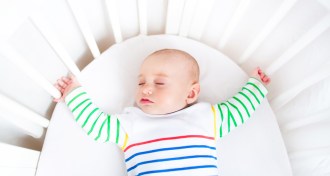 Health & Medicine
Health & MedicineTired parents don’t always follow sleep guidelines for babies
Night videos revealed parents putting their babies to bed in unsafe environments.
-
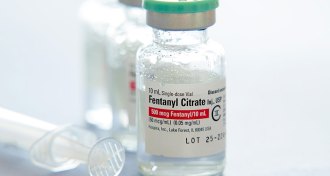 Neuroscience
NeuroscienceFentanyl’s death toll is rising
The ability of fentanyl, an opioid, to freeze chest muscles within minutes may be to blame for some overdoses, a new autopsy study shows.
-
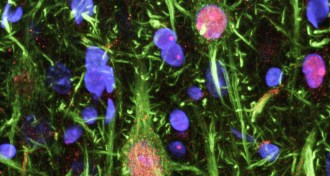 Neuroscience
NeuroscienceEating shuts down nerve cells that counter obesity
A group of nerve cells shut down when food hits the lips, a study of mice finds.
-
 Health & Medicine
Health & MedicineKeep it simple when choosing a sunscreen for your kid
For parents swimming in a sea of sunscreen choices, look for a few key attributes.
-
 Neuroscience
NeuroscienceAging-related protein may play role in depression
Mouse study reveals link between aging protein and depression.
-
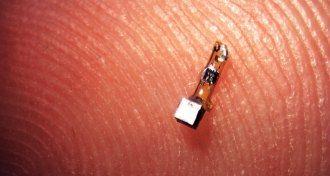 Neuroscience
Neuroscience‘Neural dust’ can listen to body’s electrical signals
Tiny crystals can detect electrical signals in nerves and muscles of rats.
-
 Neuroscience
NeuroscienceRed blood cells sense low oxygen in the brain
Red blood cells sense low oxygen and speed to the scene, a new study suggests.
-
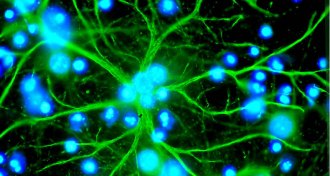 Neuroscience
NeuroscienceGift-giving brain cells are lifeline to injured nerve cells
After an injury, astrocytes give nerve cells a gift of mitochondria, mouse study suggests.
-
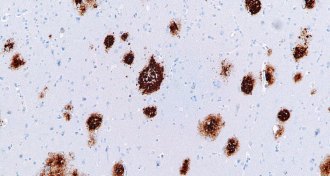 Neuroscience
NeuroscienceAntibiotics might fight Alzheimer’s plaques
A new study found that antibiotics hit Alzheimer’s plaques in the brains of mice.
-
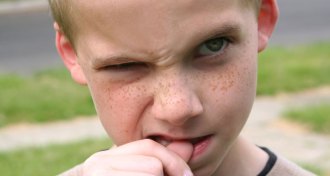 Health & Medicine
Health & MedicineNail-biting and thumb-sucking may not be all bad
Nail-biters and thumb-suckers may actually be warding off allergies by introducing germs to their mouths, a new study suggests.
-
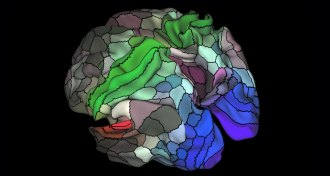 Neuroscience
NeuroscienceNew brain map most detailed yet
By combining different types of data, researchers have drawn a new detailed map of the human brain.
-
 Neuroscience
NeuroscienceThe brain’s blueprint for aging is set early in life
The brain's decline may mirror its beginning, offering clues to aging.